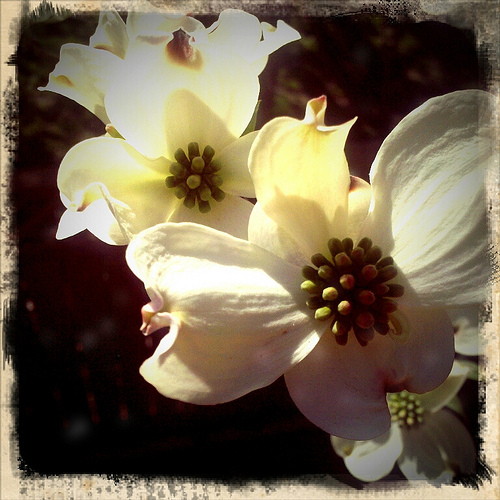Here is another great post by Matthew Roberts of Ginkgo Gardens on native plants. Even the blackest thumbs will appreciate gaining knowledge and appreciation for our local plant heroes. –MHC
My tenth grade math teacher used to always put an extra credit question on the final exam: Q. What did the acorn say when he grew up? A. Gee I’m A Tree (Get it? Geometry!) Now that little acorn should be saying, “Plant me, plant me!”
If you could do one thing to improve the natural world around you today it would be to plant an oak. Of course not all of us have enough room to plant what will become someday such an enormous specimen of treehood, but let’s see why before we move on to more appropriate native trees for the Hill (and beyond).
In studies to determine which species of tree is the “hostess with the mostess,” the good old oak (Quercus) comes out on top every time. If you want visitors from the family Lepidoptera (like moths and butterflies) or from Heteroptera (true bugs), or from Orthoptera (katydids, grasshoppers and crickets) then go with a red or white oak. They can support 517 species as compared with the runner-up willow (Salix) at 456. Others at the top are cherries, plums, birches, cottonwoods, crabapples, blueberries, cranberries, elder and maples. Sorry to overload you with so much information, but to round out the top twenty are elm, pine, hickory, hawthorn, alder, spruce, ash, linden, filbert, walnut and beech. See, there’s really quite a lot that you can choose from and still “Go Native.”
Some of these guys are pretty huge and won’t fit in your back yard very easily so let’s give a big shout-out to Congressional cemetery for planting some on their grounds for us. I love beeches and hickories (pop quiz: which president was known as ‘Old Hickory’ and why), but they are ginormous so I have to visit them at the arboretum or on the Capitol grounds or over in Dumbarton Oaks. The red maple (Acer rubrum) is more our size and when combined with sugar maples (Acer saccherum) and river birches (Betula nigra) you’ve got an unbeatable autumn show of reds, oranges and brilliant yellows. Not to mention they are all born and bred here in the mid-Atlantic. If spring is more your thing then stock up on black cherries (Prunus serotina), southern crabapple (Malus angustifolia) and my favorite hawthorn that can take the heat in this Southern town, the aptly named Washington hawthorn (Crataegus phaenopyrum).
Now don’t be upset if your favorite tree didn’t make the cut. There are two variables here, or even three, perhaps. First, there are other natives that just don’t support as much wildlife, but are still a very good option for you. We were just highlighting the top twenty, but anything’s better than out-sourcing your backyard. Lovely options like the various serviceberries (Amelanchier arborea, canadensis, or laevis), which are very in vogue these days, or sweetbay magnolia (Magnolia virginiana) or our beloved flowering dogwood (Cornus florida) fit the scale of the typical Hill home and as you can tell from the Latin names (Canadensis, florida, and virginiana) are denizens of the East Coast in general and make the District their home in particular.
Secondly, we’re going with species only and leaving out the various cultivars. This gets a little technical, but the species is the tree (or shrub, or perennial, etc.) as it occurs in nature. A cultivar is that plant which has been bred, selected, tweaked, pinched, specially pollinated, in general one that has felt the backhand or adoring caress of mankind. A point of discussion within the Native Community is whether cultivars can stand up to the species from which it was derived. I, myself, feel that just because the flower is now pink instead of white although it still blooms at the same time and makes the same pollen and drops its leaves at the same time and so on and so on; it should not be evicted from the arena. That’s just me.
And thirdly, there is “zone creep.” We’ve noticed for years that more southerly plants have survived here in the city than out in the ‘burbs. It’s a hope that what’s native in the Carolinas will help out the critters up here and stuff from the banks of the Delaware (or even the Hudson) should be able to feed and protect and house what’s moving north. Every little bit helps prevent ecological collapse, so keep it in mind when you’re next at the nursery.
P.S. I forgot my all-time favorite: tulip tree (Liriodendron tulipfera) which should be coming into bloom soon. The gigantic specimens at the British Embassy Gardens used to drop lime & citron & tangerine coloured (see I used the British spelling) blossoms on our heads when weeding the beds behind the tennis court). Those big Yankee trees dominated that section of the garden. USA, USA, USA!


Thanks for the insight on cultivars versus species and what “counts” as native. That perspective is just as valuable as a species list.
My favorites also include eastern redbud (Cercis canadensis) and white fringe tree (Chionanthus virginicus) to this list. The hill has lots of the red buds already and they really seem to thrive. Greenspring park in Alexandra has a really stunning white fringe tree- to see it, is to want it!